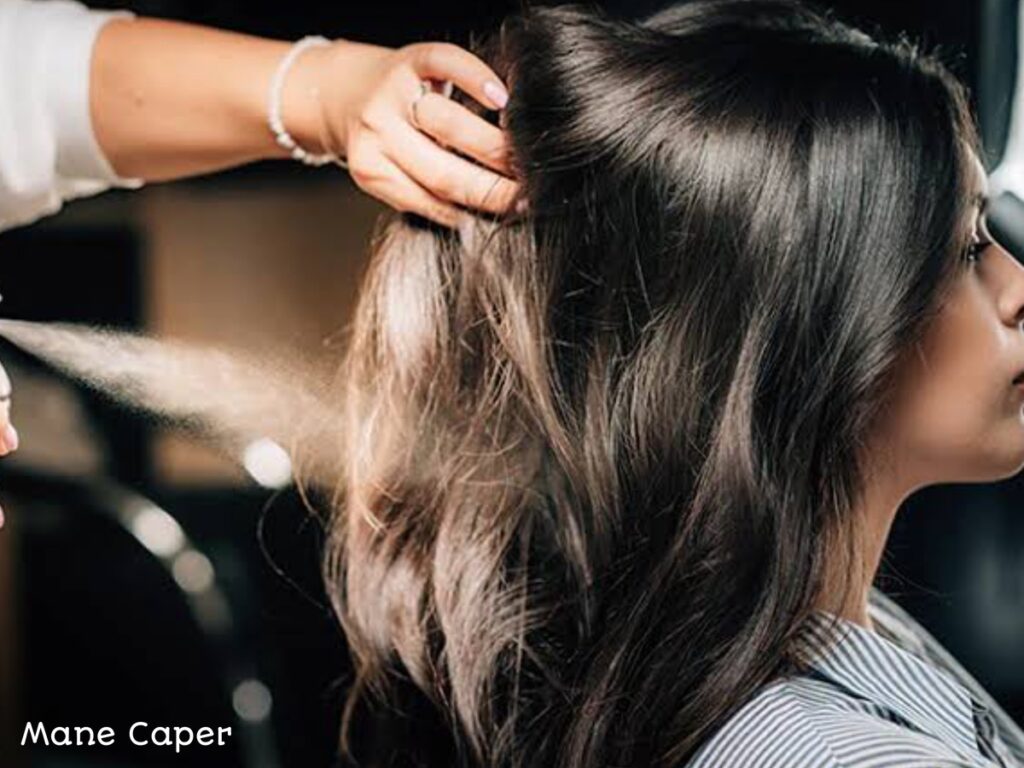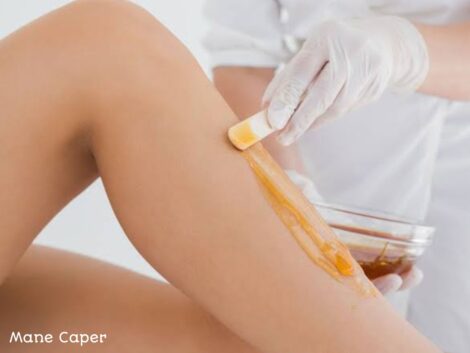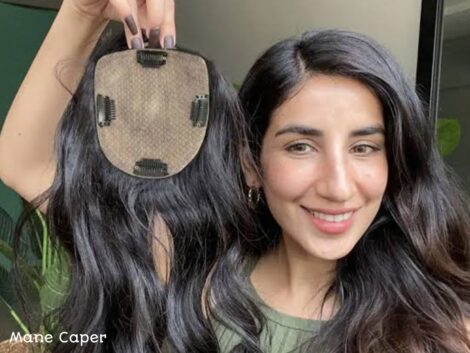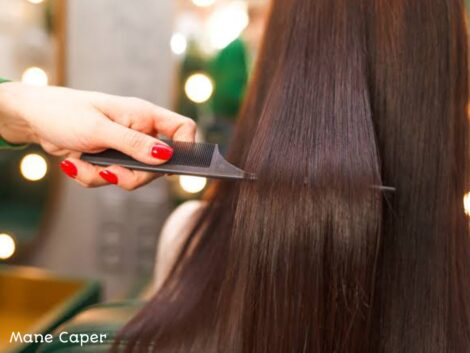Choosing the right hair product and treatment can be troublesome work. In this article, multiple frequently asked questions related to this topic have been elaborately discussed to provide you with proper instructions.
Fixing hair extension mistakes depends on the specific issue you’re facing. Here are some common problems and potential solutions:
- Tangled Extensions: Use a wide-tooth comb or a special detangling brush designed for extensions. Start from the bottom and go up slowly to avoid damage.
- Visible Extensions: If the extensions are peeking through your natural hair, try repositioning them. You can also add more hair on top to cover them or visit a professional stylist for adjustments.
- Uneven Blending: If the extensions don’t blend well with your natural hair, consider trimming them to match the length or adding layers for seamless integration.
- Damage: If your natural hair is damaged due to the extensions, give it a break from any further chemical or heat treatments. Regularly condition your hair, and consider removing the extensions to allow it to recover.
- Colour Mismatch: If the extension colour doesn’t match your natural hair, you can dye them to blend better. However, it’s best to consult a professional colorist for this task to avoid damaging the extensions.
If you’re unsure how to fix the issue or if it’s a significant problem, it’s best to consult a professional hairstylist who has experience working with hair extensions.
https://youtu.be/sz0LRD2Tztk?si=DcOdqkyPv-9142NH
What Are Some Mistakes People Make While Waxing Their Hair?
Several common mistakes can occur while waxing hair. Here are some of them:
- Not Prepping the Skin: Failure to properly cleanse and exfoliate the skin before waxing can lead to ineffective hair removal and increase the likelihood of ingrown hairs.
- Using the Wrong Type of Wax: Different body areas may require different types of wax (hard wax, soft wax, stripless wax, etc.). Using the right kind can result in efficient hair removal or discomfort.
- Incorrect Temperature: Wax that is too hot can cause burns, while wax that is too cool may not effectively remove hair. It’s essential to follow the heating instructions provided with the wax product.
- Applying Too Much Wax: Over-application of wax can make it difficult to remove and increase the likelihood of skin irritation or bruising.
- Pulling Incorrectly: Pulling the wax strip in the wrong direction or too slowly can result in ineffective hair removal or breakage, leading to ingrown hairs.
- Not Holding the Skin Taut: Failing to stretch the skin properly before removing the wax strip can result in discomfort and may not provide optimal hair removal.
- Repeating Too Often: Overwaxing the same area can irritate the skin and lead to damage such as bruising, redness, or even lifting of the skin.
- Ignoring Aftercare: Proper aftercare, such as applying soothing lotion or avoiding activities that may irritate the skin (like hot baths or tight clothing), is essential for minimizing post-waxing discomfort and preventing ingrown hairs.
- Waxing Too Short Hairs: Hairs need to be a certain length for effective waxing. The wax may not adhere properly if they’re too short, leading to ineffective hair removal.
- Ignoring Allergies or Sensitivities: Some people may be allergic to certain ingredients in wax or have sensitive skin. Ignoring these conditions can lead to adverse reactions such as redness, swelling, or itching.
To avoid these mistakes, it’s essential to carefully read and follow the instructions provided with the waxing product and take proper care of your skin before and after waxing.
How Can I Avoid Mistakes When Using Hair Products?
To avoid mistakes when using hair products, consider the following tips:
- Choose Products Suited to Your Hair Type: Select hair products formulated for your hair type (e.g., dry, oily, curly, or straight) to achieve the best results. Using the wrong products can lead to ineffective styling or damage to your hair.
- Start with a Small Amount: It’s often better to start with a small product and gradually increase if needed. Over-application can damage your hair, make it greasy, or lead to product buildup.
- Apply Products Correctly: Follow proper application techniques for each product. For example, evenly distribute styling products through your hair and apply heat protectants before using heat styling tools.
- Don’t Overuse Heat Styling Tools: Excessive use of heat-styling tools can damage your hair. Use them on the lowest effective temperature setting, and always apply a heat protectant beforehand.
- Consider Your Environment: Factors like humidity, weather, and water quality can affect how your hair reacts to products. Adjust your product usage accordingly to maintain the desired results.
- Monitor Your Hair’s Response: Pay attention to how your hair responds to different products. If a product causes irritation, dryness, or other adverse effects, discontinue use and consider trying a different one.
By following these tips and being mindful of your hair’s needs and reactions, you can effectively use hair products to achieve your desired hairstyle while minimizing mistakes and potential damage.
Can Hair Rebonding Lead to Failure?
Yes, hair rebonding can lead to failure if not done properly or if certain factors are overlooked. Some common reasons for hair rebonding failures include:
- Improper Technique: Hair rebonding requires precise application and timing. If the stylist doesn’t follow the correct procedure or leaves the chemical treatment on for too long or too short a time, it can result in uneven straightening or damage to the hair.
- Inadequate Conditioning: Hair rebonding involves using harsh chemicals to break and rearrange the hair’s bonds. If the hair is not adequately conditioned before or after the procedure, it can become dry, brittle, and prone to breakage.
- Hair Type and Condition: Some hair types, such as heavily damaged or previously chemically treated hair, may not respond well to rebonding. Additionally, if the hair is already weak or fragile, the chemical process of rebonding can cause further damage.
- Product Quality: The quality of the products used during the rebonding process can significantly impact the outcome. Using low-quality or expired products may not effectively straighten the hair or could cause damage.
- Environmental Factors: Exposure to harsh environmental elements such as sun, wind, and pollution can affect the longevity of hair rebonding results. Protective measures such as hats or UV protectors can help preserve straightened hair.
To minimize the risk of hair rebonding failures, it’s crucial to choose a reputable salon with experienced stylists and follow all pre and post-treatment instructions provided by the stylist.
What Are Some Mistakes People Make with Wet Hair?
Handling wet hair requires some care to avoid damaging it. Here are some common mistakes people make with wet hair:
- Brushing wet hair
- Rubbing with a towel
- Skipping heat protection
- Tying hair up
- Skipping Conditioning.
- Overwashing.
- Sleeping with wet hair
By avoiding these common mistakes and adopting healthy hair care habits, you can keep your wet hair looking and feeling its best while minimizing damage and breakage.
How Can I Avoid Mistakes With Hair Toppers?
To avoid mistakes when using hair toppers, consider the following tips:
- Choose the right type and size: Select a hair topper that matches your hair color, texture, and desired coverage area.
- Proper Placement: Place the hair topper correctly on your head to achieve a natural look. Position it slightly behind your hairline and secure it firmly using clips or other attachment methods provided with the topper.
- Blend with Natural Hair: Blend the hair topper with your natural hair by styling them together. Use a curling iron or flat iron to create waves or curls that match the texture of the topper, or trim your natural hair to blend seamlessly with the topper.
- Secure Attachment: Ensure that the hair topper is securely attached to your head to prevent it from shifting or coming loose throughout the day. Use additional clips or adhesive if necessary, and avoid activities that may cause excessive pulling or tugging on the topper.
- Regular Maintenance: Follow the manufacturer’s instructions for washing, conditioning, and styling the topper, and store it properly when not in use to prevent tangling or damage.
By following these tips and taking proper care of your hair topper, you can avoid common mistakes and enjoy the benefits of enhanced volume, coverage, and confidence in your hairstyle.
Lastly, check out the mane caper shop.





